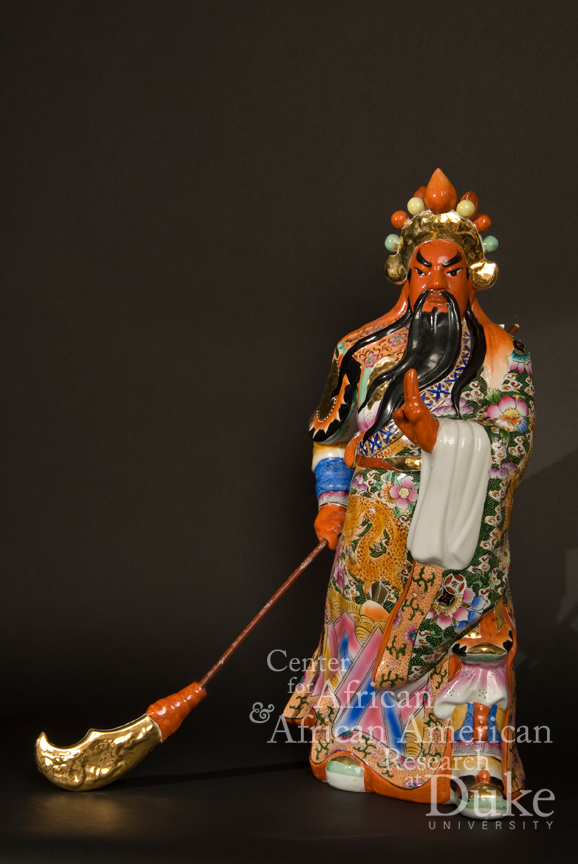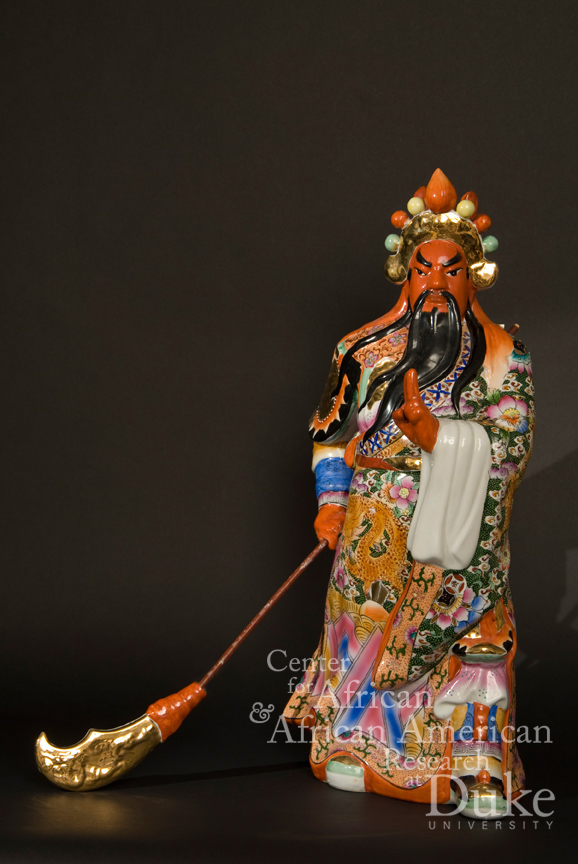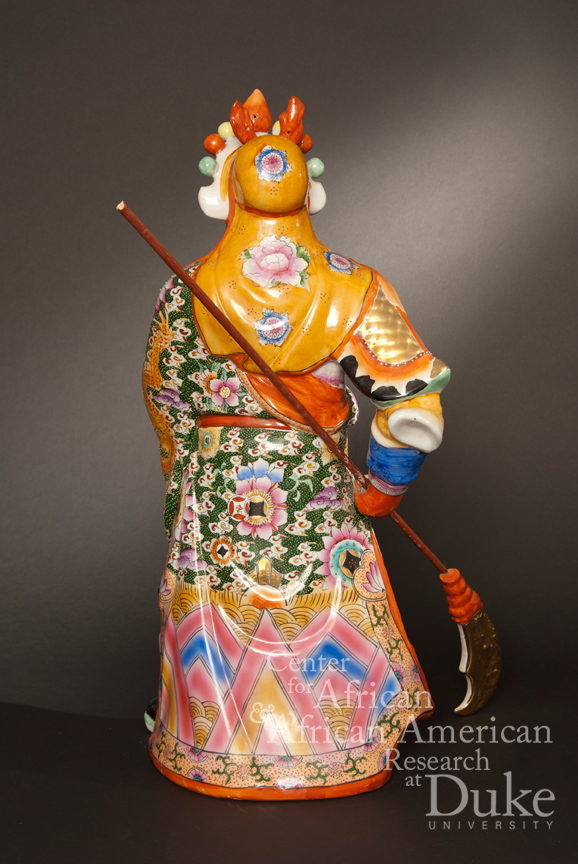


Figure with spear: 65.5 x 28.0 x 10.5 cm; spear alone: 74.0 x 2.5 cm
(centimeters)
Figure with spear: 26.0 x 11.0 x 4.0 in; spear alone: 29.0 x 1.0 in
(inches)
Cubans of Chinese ancestry have lived on the island for more than a century, and since the fall of the Soviet Union, Cubans, Chinese–Cubans, and new Chinese immigrants have come into increasing contact, allowing them to share their material and visual cultures.
This figure, known as Kwan Yu, Guan Yu, Kwan Kong, or Guan Gong in a Chinese context, entered Santería by way of such connections. Through contacts with Chinese religious practices, priests (santeros and santeras) borrowed the Chinese divinity for their own practices. Originally, he was a saint in his own right, named Sanfancón, a Cubanization of the already Westernized version of his name, San-Fan-Con or San Fang Kong. Cubans proclaimed the red-faced figure to be the patron saint of Chinese–Cubans. Over time, the figure became identified as an aspect or avatar of the Catholic saint Santa Barbara, and of Changó, the Afro–Cuban oricha, or divinity, of thunder, and a royal warrior. Changó’s preferred colors of red and white are represented in the figure’s ruddy complexion and the white cloth across his left arm, and his martial stance suggest Changó’s own fighting prowess.
The adoption of a Chinese form to represent an African spirit is an example of the extreme innovation and creativity shown by practitioners of Santería in Cuba, as well as an index of the power of global forces to impact and transform Afro–Diasporic religions.
Contact
Sacred Arts of the Black Atlantic Project, Duke University
Box 90091
Durham, NC 27708
Email
jm217@duke.edu